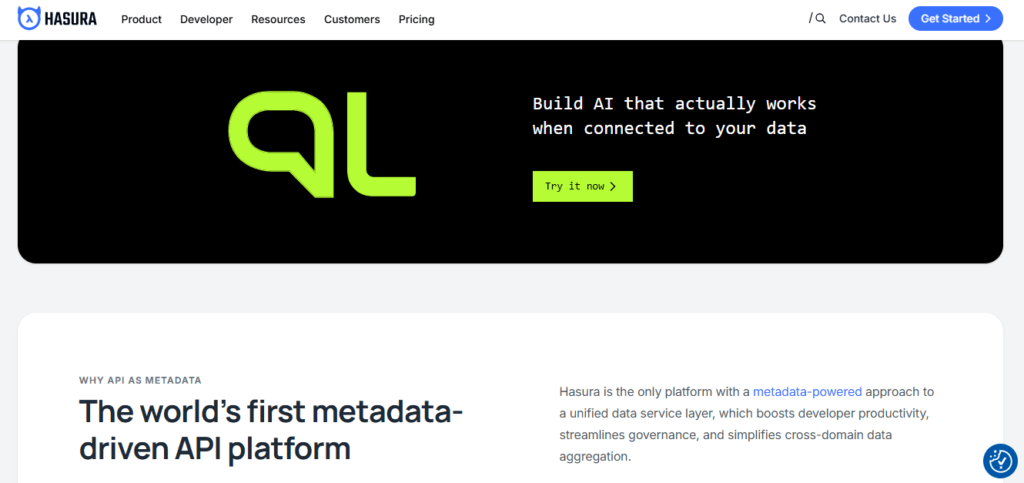Make Money: In the rapidly progressing scene of application change, Hasura has risen as a groundbreaking device that modifies backend enhancement while boosting efficiency and flexibility. Whether you’re an arranged creator or a startup creator, Hasura’s highlights are worth exploring for building display day, data-driven applications. In this article, we’ll bounce into what Hasura is, how it works, and why it’s finished up being a favorite among architects worldwide.

What is Hasura?
Make Money: Hasura is an open-source engine that promptly produces a real-time GraphQL API on the best of your existing databases. With Hasura, engineers can center on building highlights and value or perhaps composing boilerplate code for database natural and APIs. It supports various databases, checking PostgreSQL, MySQL, and more, making it adaptable and accessible.
Key Highlights of Hasura
Real-Time GraphQL APIs
Make Money: Hasura makes real-time APIs, allowing you to get and control data with ease. It arranges the requirement for custom server-side headway for conventional utilize cases.
Authorization and Get to Control
Built-in role-based get-to-control ensures your data is secure. You can characterize authorizations at a granular level for differing parts, such as admin, client, or guest.
Event Triggers
Make Money: Event triggers enable you to execute a custom commerce basis in response to database events. For outline, you can send takes note when a present-day client signs up.
Remote Designs and Actions
Extend the GraphQL design by sewing together more distant mappings or characterizing custom resolvers. This is especially important for joining third-party services.
Support for Diverse Databases
Hasura supports not only reasonable PostgreSQL but besides other databases like MySQL and MongoDB, making it versatile for diverse wander requirements.
Why Architects Venerate Hasura
1. Speed of Development
Hasura certainly lessens progression time by auto-generating APIs and minimizing the requirement for custom server-side code. Originators can center on building frontends or custom commerce basis instead of pushing around backend setup.
2. Versatility and Real-Time Updates
The ask for real-time overhauls in applications has been created, and Hasura handles this with ease. Whether you’re building a chat app, collaborative devices, or live dashboards, Hasura’s GraphQL enrollments ensure data is updated in real time.
3. Integration-Friendly
Hasura planning reliably with existing databases, cloud organizations, and gadgets like Firebase, AWS Lambda, and more. This makes it straightforward to get without redesigning your tech stack.
4. Community and Ecosystem
Being open-source, Hasura Hasana energetic community of engineers contributing to its natural framework. This ensures ceaseless improvement and openness of resources like guideline works, plugins, and templates.
How Hasura Works
Hasura’s value can be broken down into a few fundamental steps:
Connect Your Database
After presenting Hasura, interface it to your database. Hasura introspects the design and makes a GraphQL API based on the database structure.

Define Permissions
Set up role-based get-too controls to ensure secure instinctive with your data.
Query and Change Data
Use GraphQL questions and changes associated with the data. Hasura gives scholarly people a bolster for testing these operations.
Extend with Exchange Logic
Add event triggers or blocked-off designs to connect custom workflows or facilitate third-party services.
Use Cases of Hasura
1. Building APIs for Convenient and Web Applications
Hasura unravels API creation for both versatile and web apps. It allows engineers to transport highlightsspeedilyr by slaughtering the requirements for server-side coding.
2. Real-Time Applications
For applications that depend on real-time data, such as stock trading stages or multiplayer diversions, Hasura’s real-time participation is invaluable.
3. Undertaking Solutions
Large endeavors utilize Hasura for data union, engaging them to tie together and direct data from diverse sources effectively.
4. Speedy Prototyping
Startups and engineers frequently utilize Hasura for fast prototyping to endorse considerations without contributing weeks on backend development.
Challenges with Hasura
While Hasura offers various benefits, it’s not without challenges:
Learning Curve
For engineers unused to GraphQL or the concept of auto-generated APIs, there can be an exciting learning curve.
Custom Method of reaReasoningmitations
While you can intensify Hasura with exercises and event triggers, complex custom methods of reasoning may require additional organizations or middleware.
Performance Overhead
In a few cases, utilizing Hasura for complex requests may show execution overhead. Optimization strategies might be required for high-traffic applications.
Getting Started with Hasura
To get started with Hasura, take these essential steps:
Install Hasura
Use Docker or Kubernetes to set up Hasura on your adjacent machine or cloud environment.
Connect a Database
Link Hasura to a database like PostgreSQL. The engine will auto-generate a GraphQL schema.
Explore the Console
Use the Hasura back to characterize assents, test questions, and set up integrations.
Build and Test
Start building your application utilizing the created GraphQL APIs. Test and rehash as needed.
The Future of Hasura
With its creating ubiquity, Hasura is adjusted to finish up a staple in display day application advancement. Its center on real-time APIs, ease of utilization, and flexibility make it a strong contender for architects building data-intensive applications.

Conclusion
Make Money: Hasura is more than reasonably a GraphQL engine; it can add up to the backend course of action that locks in engineers to build solid, real-time applications with irrelevant effort. Whether you’re working on a personal expansion or a large-scale wander application, Hasura can be a game-changer. By leveraging its highlights, you can save time, diminish complexity, and give high-quality applications speedier than ever.
If you haven’t endeavored Hasura in any case, directly is time to explore its potential and see how it can alter your change workflow.
































































































